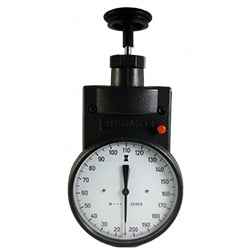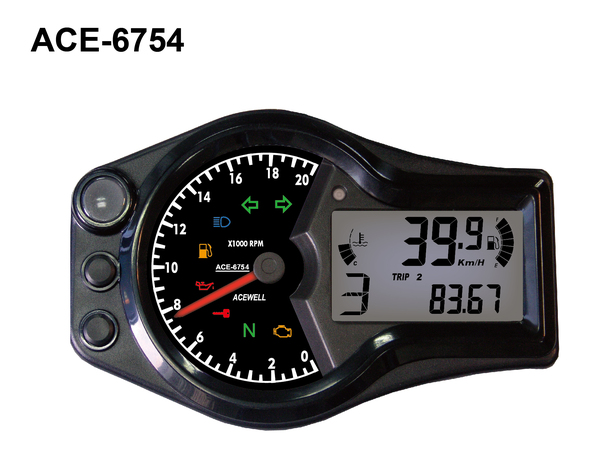Tachometer Acquiring Guide: Attributes to Look for and Finest Brand names
Tachometer Acquiring Guide: Attributes to Look for and Finest Brand names
Blog Article
The Value of a Tachometer in Keeping An Eye On Engine Speed and Efficiency in Automotive Applications
In the realm of vehicle engineering, the tachometer stands as an essential instrument in the motorist's arsenal, supplying a straight window into the inner workings of a vehicle's engine. Past its feature as a plain scale of transformations per min (RPM), the tachometer functions as an essential device for enthusiasts and specialists alike, offering real-time insights right into engine efficiency and wellness. Recognizing the relevance of this tool exceeds surface-level monitorings, diving right into the elaborate partnership between engine rate, power output, and overall driving experience. As we check out the complex duty of the tachometer in automotive applications, a deeper gratitude for its influence on lorry dynamics and efficiency begins to emerge.
Relevance of Keeping An Eye On Engine RPM
Checking engine RPM, or changes per minute, is a critical element of automotive upkeep and efficiency assessment. Engine RPM straight correlates with the speed at which the engine's crankshaft rotates, indicating how swiftly the engine is running - tachometer. By keeping an eye on RPM, mechanics can analyze the wellness of the engine, identify possible problems, and fine-tune performance. An irregular RPM analysis may signal problems such as engine misfires, defective ignition system, or concerns with the gas shipment system. Continually high RPM analyses could indicate aggressive driving routines or the requirement for a higher gear change to boost gas effectiveness.
Moreover, monitoring engine RPM is vital for performance evaluation in auto racing and high-performance cars. Maintaining optimum RPM levels is essential for accomplishing peak power outcome and velocity. Racers frequently make use of tachometers to guarantee they are operating within the suitable RPM array for maximum performance. In summary, monitoring engine RPM is not only important for identifying problems but additionally for maximizing engine efficiency in different vehicle applications.

Advantages of Real-Time Information
In vehicle applications, real-time information plays a crucial function in offering immediate insights right into the efficiency and condition of the vehicle. By continuously checking numerous specifications such as engine rate, temperature level, gas consumption, and extra, real-time information provides numerous advantages that contribute to enhanced effectiveness and security when traveling.
One considerable benefit of real-time data is its capability to alert drivers and technicians to any abnormalities or concerns immediately. This proactive method enables quick identification of potential issues, enabling for timely interventions to avoid additional damage or failures. Web Site Furthermore, real-time data facilitates performance optimization by giving instant responses on driving routines and engine effectiveness. Drivers can readjust their habits in real-time based on this info to achieve much better fuel economy and prolong the life-span of their vehicle.

In addition, real-time data plays an essential role in contemporary auto diagnostics, making it possible for specialists to promptly diagnose and attend to malfunctions. This brings about reduced downtime, lower maintenance prices, and ultimately, enhanced overall lorry reliability and long life (tachometer). By taking advantage of the power of real-time information, auto stakeholders can make enlightened decisions that positively affect both the performance and long address life of the automobile
Effect On Gear Shifts
Efficient gear shifts in automotive applications dramatically affect general performance and driving experience. The tachometer plays an essential function in maximizing equipment changes by offering real-time engine speed data to the motorist. When approaching the redline on the tachometer, it signals the chauffeur to upshift to prevent over-revving the engine and causing possible damage. On the various other hand, downshifting at the right minute can assist maintain the engine in its power band, guaranteeing receptive acceleration when needed.
In addition, the tachometer aids in achieving smoother equipment transitions, specifically in hand-operated transmissions. By keeping an eye on engine rate, motorists can implement equipment changes at the ideal RPM array, decreasing snagging movements and reducing wear on the transmission parts. This accuracy on duty adjustments not just enhances driving comfort yet likewise adds to sustain performance.
Enhancing Gas Performance
Provided the crucial duty the tachometer plays in enhancing equipment shifts for efficiency and engine health, it straight contributes to taking full advantage of fuel effectiveness in automobile applications. By supplying real-time feedback on engine rate, the tachometer aids vehicle drivers in preserving one of the most effective RPM range address for gas economic climate. When chauffeurs consistently keep track of the tachometer and adjust their motoring practices appropriately, they can avoid unnecessary gas intake triggered by over-revving or lugging the engine.
In addition, the tachometer assists drivers determine the most fuel-efficient equipment to be in at any kind of provided minute, avoiding the engine from functioning harder than needed. In final thought, the tachometer offers as an important device in boosting fuel performance by promoting optimum driving behaviors and recognizing locations for renovation in the car's efficiency.

Optimizing Engine Long Life
The tachometer's duty in keeping track of engine rate and efficiency is important in making certain the durability of automotive engines. Keeping track of the tachometer allows drivers to stay within the advised RPM range for their automobile, stopping unnecessary stress on the engine and extending its life expectancy.

Final Thought
Finally, the tachometer plays a vital duty in checking engine speed and efficiency in auto applications. By providing real-time information on RPM, it permits reliable equipment shifts, enhanced gas performance, and made best use of engine longevity. This tool is necessary for keeping optimum engine efficiency and ensuring the total performance of a car.
Report this page